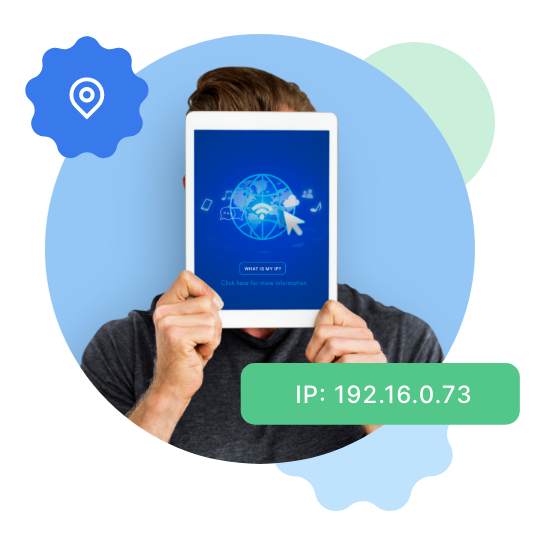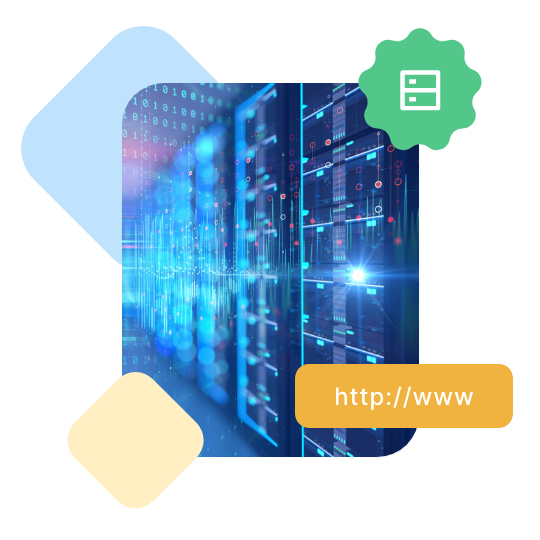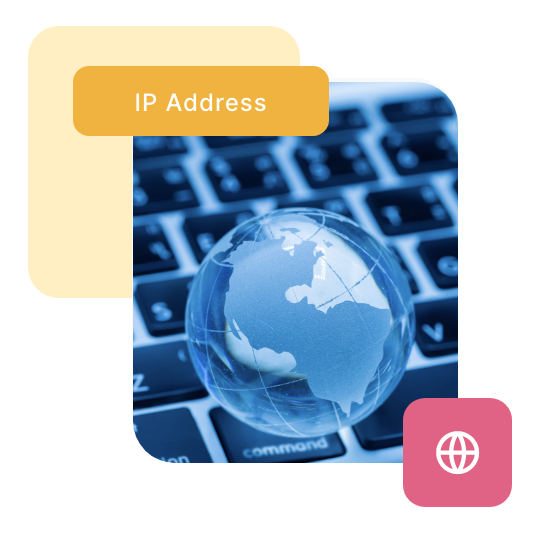Your IP Address is:
00.000.000.00
Your IP Guide
Understand Your Online Presence
What Is an IP Address?
Imagine you're sending a letter to a friend. You'd need to write your friend's home address on the envelope so the postman knows where to deliver it. Similarly, every device that connects to the internet (like your computer or phone) has its own unique address. This is called an IP Address, which stands for Internet Protocol Address.
An IP address looks like a set of four numbers separated by dots (for example, 192.168.1.1). Each number can be anything from 0 to 255. So when you want to visit a website or send a message, your device sends this information out to the IP address of the destination.
An IP address looks like a set of four numbers separated by dots (for example, 192.168.1.1). Each number can be anything from 0 to 255. So when you want to visit a website or send a message, your device sends this information out to the IP address of the destination.

How Websites Work
Let's say you want to visit your favorite website. You type the website's name (like www.google.com) into your web browser. But computers don't understand names like "google.com". They understand IP addresses.
So, your request first goes to a special type of server called a DNS server (Domain Name System server). It's like a big phone book for the internet that matches website names to IP addresses. The DNS server tells your computer the IP address of the website you're looking for.
Then your computer sends a request to that IP address, and the server at that address sends back the website data to your computer. Your web browser then translates that data into the webpage you see on your screen.
So, your request first goes to a special type of server called a DNS server (Domain Name System server). It's like a big phone book for the internet that matches website names to IP addresses. The DNS server tells your computer the IP address of the website you're looking for.
Then your computer sends a request to that IP address, and the server at that address sends back the website data to your computer. Your web browser then translates that data into the webpage you see on your screen.

How Computers Communicate With Each Other
Now, imagine the internet as a huge city, and every device (like computers, phones, servers) as a building in the city. Each building has a unique address, which is the IP address we just talked about. When your computer wants to send a message to another computer, it puts the message in a virtual envelope and writes the destination IP address on it.
This message then travels through lots of different places to reach the destination. These places are like the roads, bridges, and junctions of the internet city. They're called routers, and their job is to make sure your message gets to the right place.
This message then travels through lots of different places to reach the destination. These places are like the roads, bridges, and junctions of the internet city. They're called routers, and their job is to make sure your message gets to the right place.

Internet Protocols: The Rules of Communication
The internet follows certain rules, known as protocols, to manage data transfer.
The Internet Protocol (IP) deals with IP addresses. The Transmission Control Protocol (TCP) ensures data sent over the internet reaches correctly, acting like a reliable postman ensuring all parts of a message reach the right address.
If a part of the message gets lost or is late, TCP sends a request for a resend, ensuring the whole message eventually gets through.
The Hypertext Transfer Protocol (HTTP), another crucial protocol, transfers website data. When you type a website address starting with "http://" or "https://", your computer uses HTTP or HTTPS to request the website data.
In short, these protocols (IP, TCP, HTTP) are the internet's rulebook. They help data know where to go (IP), arrive correctly (TCP), and in a readable format (HTTP), ensuring the smooth function of the internet.
The Internet Protocol (IP) deals with IP addresses. The Transmission Control Protocol (TCP) ensures data sent over the internet reaches correctly, acting like a reliable postman ensuring all parts of a message reach the right address.
If a part of the message gets lost or is late, TCP sends a request for a resend, ensuring the whole message eventually gets through.
The Hypertext Transfer Protocol (HTTP), another crucial protocol, transfers website data. When you type a website address starting with "http://" or "https://", your computer uses HTTP or HTTPS to request the website data.
In short, these protocols (IP, TCP, HTTP) are the internet's rulebook. They help data know where to go (IP), arrive correctly (TCP), and in a readable format (HTTP), ensuring the smooth function of the internet.

 Country
Country City
City Region
Region